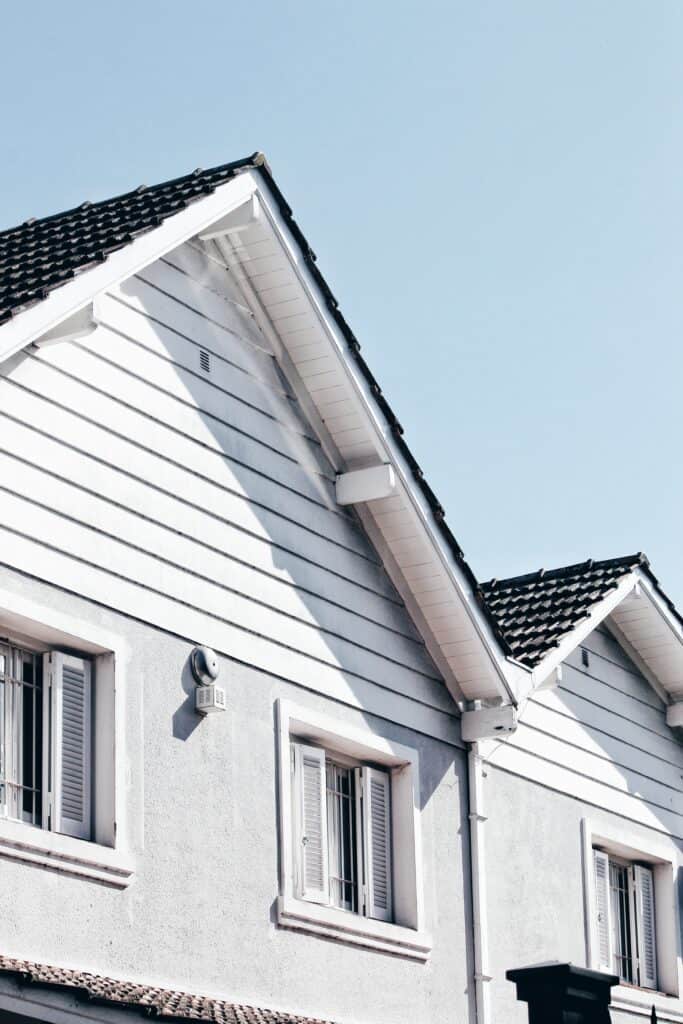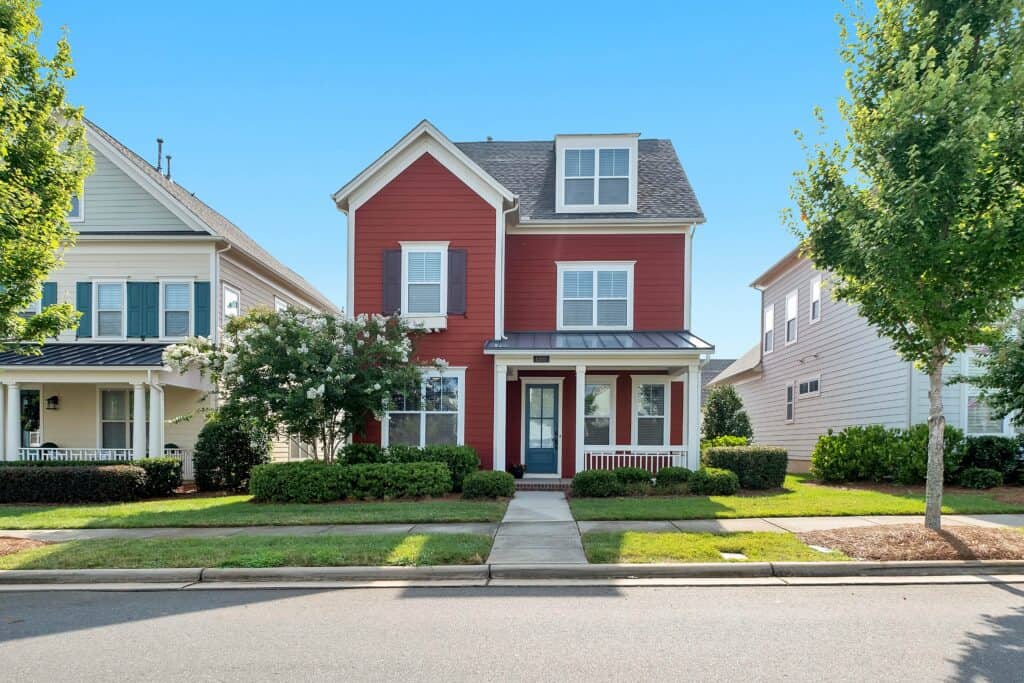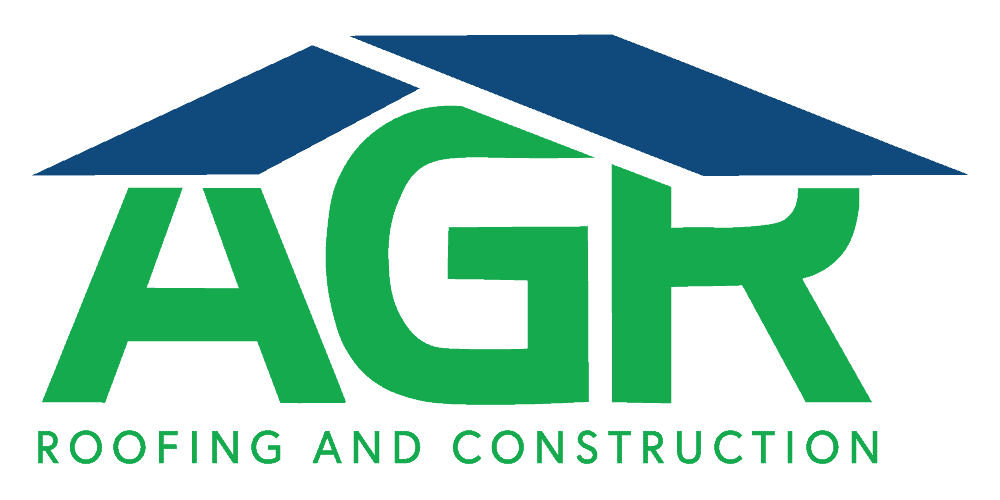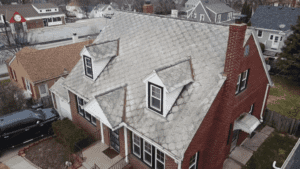The type of siding on your home is ultimately based on your individual preferences, as there are several factors that play a role in your decision. Aesthetics often play a significant role in this choice.
While pricing and budget are important factors to consider, it is essential that you also have a strong preference for the appearance of your home’s exterior. After all, this will be something you see each day and it reflects your overall identity.
The introduction naturally segues into the discussion of vinyl siding. Its advantages go beyond just its appearance– in fact, there are multiple benefits it can provide. Ultimately, the decision to add vinyl siding to your home’s exterior will depend on your personal taste for its aesthetic appeal.
In this blog, we will discover vinyl siding options that offer enhanced visual appeal. Along with its visually pleasing appearance, vinyl siding also boasts benefits such as improved durability, low maintenance requirements, and great value.

What Materials Compose Vinyl Siding?
Vinyl siding serves both aesthetic and weatherproofing purposes, making it a strong protective layer for the exterior of a house. This durable material is constructed mainly from polyvinyl chloride (PVC), a type of plastic.
Vinyl siding has been a popular choice for new homes for more than 25 years, due to a variety of factors. A key factor is its strong return on investment, with an average of 80%. In this aspect, vinyl siding surpasses all other siding materials.
While you may not currently have plans to sell your home, the noteworthy ROI should provide a sense of reassurance and calmness when the time comes to put your house on the market.
Additionally, the advantages extend beyond just enhancing your home’s attractiveness when it comes to selling. More details on these benefits will be explored in the following section.
What Are the Biggest Advantages Of Vinyl Siding?
Within this section, you will discover the advantages of dressing your home’s exterior with vinyl siding.
Vinyl Siding is Low Maintenance and Long-Lasting Durability
Vinyl is the most low-maintenance siding option, preserving its fresh appearance without the need for regular upkeep. Generally, annual cleanings are sufficient for proper maintenance of vinyl siding.
In most cases, materials that require minimal upkeep are known for their durability. This is certainly true for vinyl siding, which can withstand harsh elements such as hail and strong winds. It also has the added benefit of being resistant to:
● Warping.
● Corrosion.
● Termites.
● Rust.
● Rotting.
● Excessive moisture.
Vinyl sliding often comes with lifetime warranties, which are a testament to the exceptional manufacturing quality.
An Affordable Solution
While vinyl siding remains a popular choice due to its affordability, wood and brick sidings tend to be more expensive. Additionally, the installation of vinyl siding is relatively simple, resulting in lower labor costs.
Hardwood installation typically ranges from $7 to $26 per square foot, while vinyl siding can be installed for $2.50 to $10.75 per square foot.
While the cost difference may appear insignificant at first, it should be noted that wood siding is significantly more susceptible to long-term damage. Furthermore, the level of maintenance required for wood siding is considerably higher, resulting in additional expenses for your investment.
On the other hand, vinyl siding not only has a lower initial cost than hardwood siding, but also does not incur any extra expenses.
No Painting Required
What are your thoughts on painting the exterior of your home? If the mere thought of it makes you feel uneasy, then vinyl siding could be a very attractive alternative.
Vinyl siding is pre-designed and colored, with a consistent hue throughout. This means that the paint will not be affected by scratches or abrasions, as it penetrates the entire material.
Reduce Your Energy Costs
Insulated vinyl exteriors are crucial for increasing energy efficiency in homes as they utilize thermal bridging to minimize heat loss.
Thermal bridging causes vinyl siding to act as a barrier, trapping warm temperatures inside your walls and preventing them from escaping like an enveloping blanket.
Your house will provide warmth in chilly winters and a cool, refreshing atmosphere in hot summers.
Your heating and air conditioning will be relieved from working excessively, resulting in a higher possibility of a lower energy bill.
Remarkable Versatility
With vinyl siding, you can achieve your desired aesthetic without exceeding your budget.
Vinyl has the ability to imitate the look of various types of siding, including cedar and stone. Additionally, it comes in a wide range of profiles, textures, and colors that can seamlessly complement a variety of architectural designs.
The Installation Process is Simple and Straightforward
The lightweight nature of vinyl makes it a more convenient installation option compared to other sliding types. Contractors can simply fit the pre-drilled holes into studs without any major challenges.
It is advisable to enlist the expertise of a professional for this task, whether it be a home improvement contractor or an experienced home builder. This ensures that the job is done correctly on the first attempt. Additionally, due to the simplified installation process, the cost will also be more reasonable.

Selecting the Ideal Vinyl Siding for Your Home
When it comes to vinyl siding, not all options are created equal. To make the best decision for your purchase, keep these factors in mind:
● The decision between vertical and horizontal vinyl siding is a significant one to make. It should be noted that vertical designs are more suitable for modern homes, while horizontal choices complement traditional houses.
● Check for stickers and fact sheets labeled with the American Society of Testing and Materials (ATSM) on the packaging. In the absence of such documentation, there will be no evidence that it has met quality standards.
● Raw vinyl is susceptible to damage from direct sunlight, while vinyl sidings are designed to endure prolonged UV exposure. However, it is important to have a conversation with your contractor or dealer about incorporating anti-weathering protection in your package.
● Typically, vinyl siding is accompanied by a 50-year warranty. However, there are instances where it may include a lifetime warranty that can be passed on to future homeowners upon selling. Additionally, there are prorated warranties available, in which the payout decreases as the siding ages. It is prudent to have a conversation about warranties before making a purchase and carefully review all terms and conditions.
For More Information about Vinyl Siding, Contact AGR Today
The professionals at AGR have extensive knowledge on vinyl siding. Let us assist you in making well-informed choices that provide advantages in terms of appearance, utility, and finances.
Interested in finding out more about vinyl siding and confirming it’s the ideal choice for your home’s exterior? If yes, reach out to AGR now with any questions. We’re eager to offer our expert knowledge.





